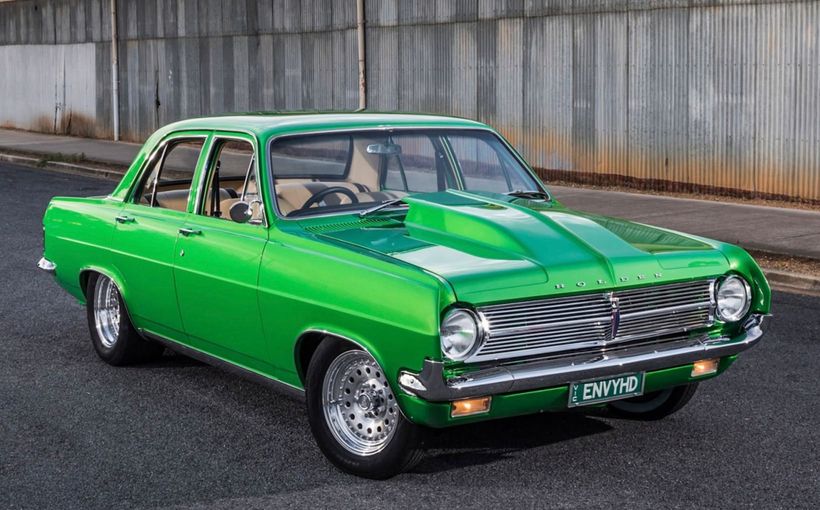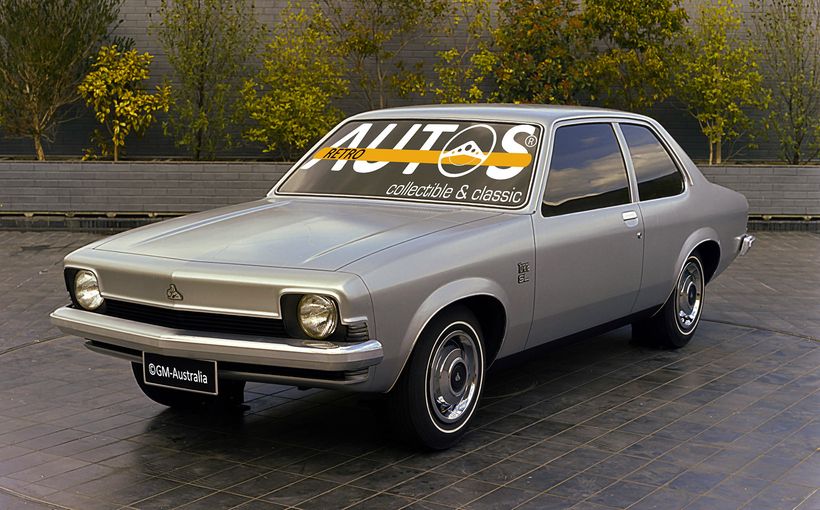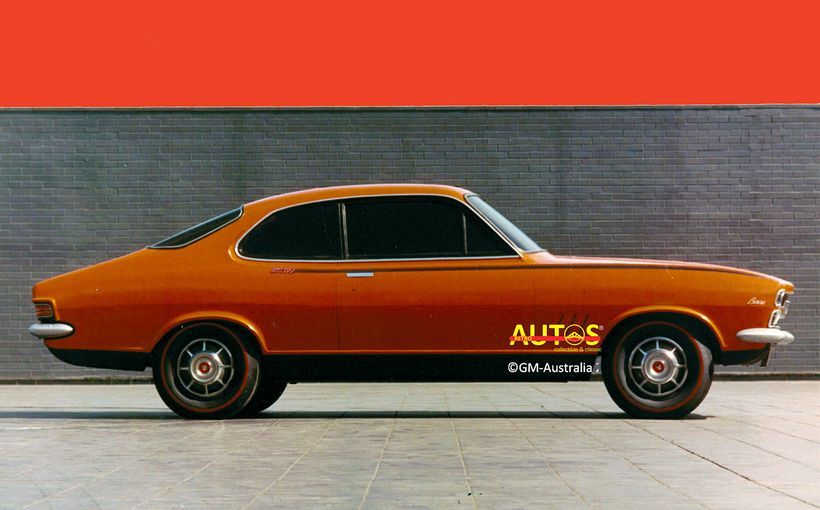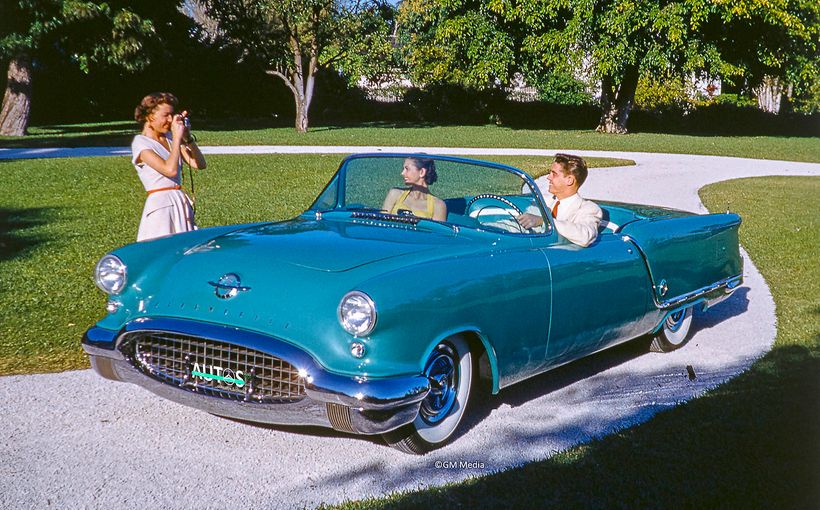
When was the last time you saw a LC/LJ/TA Torana four cylinder? They are rarer than a GTR XU1, I reckon.
Ever since the LC range was released in October 1969, the four-cylinder Torana has been overshadowed by the six-cylinder variants. With blunt front ends and small motors, the fours were no match for the attention-grabbing sixes, with their stretched wheelbase, long front fenders, aggressively angled Pontiac inspired grille and GTR hero models.

And yet, four years earlier, a six-cylinder Torana was not on General Motors Holden’s (GMH) agenda. Back then, GMH was preparing the Leo Pruneau designed Vauxhall HB Viva for its 1967 Australian launch as the Torana, and already considering its replacement, which GMH expected to be a four-cylinder car.
Leo’s coke-bottle styling endowed the Viva/Torana with the appearance of a mini-Chevrolet Camaro. Trouble was, the performance of the 71 cu.in/1.2 litre four-cylinder engine never matched the styling’s promise.


While the Viva/Torana was being readied, a July 1965 report by product planners had identified two interconnected issues related to the engine.
First: a 1.2 litre four was OK in the UK. In Australia, however,where a six was considered the minimum acceptable form of propulsion beyond the suburbs, it was not a selling point. The Torana would need a larger engine to be competitive in the long run.


Second: the federal government’s regulations required locally built cars to progressively achieve at least 95% local content by January 1970. Using imported components would incur the penalty of high tariffs that would push up the retail price. In 1965 the HA Viva could only manage 43.8%. Progressive localisation, by making the body, mechanical components and the engine, was the way to reach 95%. The accompanying chart summarises what GMH planned to do, which dovetailed with the timing of the HB’s replacement, now coded HC.

The planners estimated the HC Torana needed an engine of between 1.5 and 2 litres to be competitive, and to keep in step with the ever-increasing engine capacity/power in mainstream cars. The options were few. There was Vauxhall’s yet to be proven 97.4 cu.in/1.6 litre slant four, due for release in 1967. It had the capacity to be stretched to 139 cu.in/2.3 litres. The more favoured proposal was cutting two cylinders off the existing Holden “red” six. This would deliver a range of four-cylinder engines spanning 83 cu.in/1.36 litres to 124 cu.in/2 litres.

While the engine issues were being evaluated, the design of the HC was being discussed. A December 1966 product planning review identified three options. The least cost option involved a minimal facelift of the HB. Higher up the cost ladder was new sheet metal on the HB’s 95.8 inch /2433mm wheelbase. The costliest, and least certain, option was to use Vauxhall’s planned HC Viva. Work on the car’s styling was only at a preliminary point and the engineering would need significant input from GMH to ensure it was developed with Australian conditions in mind.

Peter Nankervis managed the Torana design studio at the time. John Schinella was the assistant design director and the design director was Joe Schemansky. For my Design to Driveway book series, I spoke with Peter and John about the HB to HC to LC Torana transition. Peter explains the minimal facelift option:
“We started out doing just a revision of the HB because we had to retain its A pillars, windscreen, front doors and firewall for cost reasons.”


John Schinella suggested a design theme for the second option. It was loosely based on a Chevrolet small car program he had worked on in late 1964, prior to his transfer to Australia in mid-1965. Chevrolet’s program went through several phases, including consideration as a mini-Camaro, before emerging as the Chevrolet Vega.




In late 1966 the styling options were reduced to two when Vauxhall confirmed the HC Viva’s release date would be October 1970. That was a year beyond the timetable for the HC Torana and 95% content, ruling it out for GMH.
Meanwhile, GMH’s senior managers realised that tooling up to build the 1.6 litre Vauxhall engine locally, and ensuring it would operate to expectations in our hotter climate and cope with our terrain, was too costly. Plus, cutting two cylinders off the red six was not as cost effective nor a mechanically viable solution as first thought. So, GMH faced a problem. What to do?


In a typical demonstration of ingenuity that so often characterised the Australian automotive industry, GMH re-framed the problem. They asked: why spend time and money developing a big four? Why not reduce the six’s capacity to around two litres?
And so, the 138 cu.in/2.25 litre engine was created. Brilliant! It ticked all the boxes for power, local content and cost. It meant the Torana could be offered as a four and six. It opened up a new category—a reasonably powerful six in a small light-weight car. And, tantalisingly, the potential for a high-performance version. (A 130 cubi.in/2.1 litre red six was used in export Holdens from 1968.)


But how to accommodate the longer six within the HB’s 95.8 inch/2433mm wheelbase? The solution is now part of our automotive folklore. Max Wilson, GMH’s managing director, was chatting to Peter Nankervis in the styling studio. Peter mentioned that Prince Motors in Japan had incorporated four-and six-cylinder engines into its 1964 Skyline by lengthening the wheelbase of the six-cylinder version ahead of the firewall.
Wilson fast tracked a feasibility study. The outcome was that the six-cylinder car would sit on a 100 inch/2540mm wheelbase, all of it ahead of the firewall. The four-cylinder car would retain the HB’s existing wheelbase. With that decision made, the engineers started testing the driveline in a disguised HB. The design team shifted its focus to the appearance of the six. The model code was changed to LC


By August 1967 the overall shape of both models had been settled. From the firewall back there were shared doors and new sheet metal. The six would be given distinctive fenders and grille.


The four would get a new grille flanked by HB fenders. The 1.2 litre engine would carry over, now with two power outputs, thanks to a 1968 compression increase which GMH’s marketing folk labelled “Series 70”. A four-door model had also been added in 1968.

When the LC was released in October 1969 the motoring media hailed the sixes as a new class of car. There was only a passing reference to the four. Automotive writer for the Brisbane Telegraph, Barry White, summed it up in his column on January 16th 1970.
“In a speech by a GMH sales executive at the press conference to preview the new Torana range last October, the four-cylinder model was allocated five words. Even now, months after the release of the LC Torana range, most people think seem to think it is an entirely six-cylinder range.”

During the next five and a half years, through its LC, LJ and TA incarnations, the four-cylinder Torana was given engine capacity and power upgrades. The Vauxhall slant 4 arrived in July 1971, now made viable by a complex interaction of export and local content credits which helped offset tariffs.


The TA was the last of the Vauxhall based breed. Appearing alongside the LH Torana in March 1974, it was a placeholder until GM’s new-T car, the TX Gemini, arrived 12 months later.
Despite it being overshadowed by the six, GMH sold 56,700 LC/LJ/TAs. Adding the HB’s sales means GMH shifted 93,200 Torana 4s over eight years with only one major styling change. Economies of scale like that must have made the bean counters happy. It also prevented Holden’s small car buyers from going to competitors.


That so many of the 56,700 LC/LJ/TAs no longer exist reflects how little they have been valued in the past decades. And yet, they contributed almost 30% of Torana sales across the years of their production. So, next time you see a LC/LJ/TA Torana 4, and the owner is nearby, congratulate them for having one of the rarest Holdens of all, and for preserving it for us to admire.
Retroautos® is written and published by David Burrell with passion and with pride. Retroautos® stories and images are copyrighted. Reproducing them in any format is prohibited. Retroautos® is a registered trademark. Reproducing it in any format is prohibited. Special thanks to John Kyros at GM Heritage Centre who researched the Centre’s files, David Booker at Vauxpedia, Peter Nankervis and John Schinella for their insights and John Field and Richard Ferlazzo who gave me access to Holden’s design studio archives a few years ago, so we can see these wonderful images.








